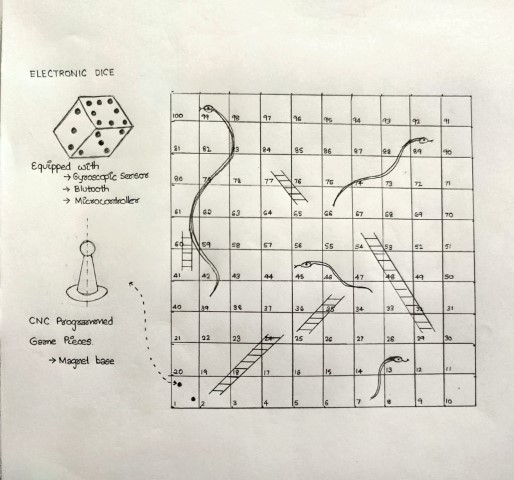Snake & Ladder
The first idea that came to my mind for the final project was to create an automated Snakes and Ladders game. Originating from a family of Indian dice board games, Snakes and Ladders presents a unique automation challenge. Typically, this game can accommodate multiple players, but for simplicity, this version will be designed for two players at a time. In this setup, each player takes turns rolling the dice, and their respective game pieces will be moved according to the number rolled.
The project's goal is to create a board where the game pieces are maneuvered using CNC programming. This will involve programming for different scenarios, such as when the pieces encounter snakes or ladders. The dice will be engineered using gyroscopes, Bluetooth, and microcontrollers, enabling the system to detect their position and the rolled number accurately. Other than using CNC programming, the game can be operated using addressable LEDs that lights up the position of the pieces.

3D Model
This is a simple 3D model that I have designed during CAD week. The video showcases the board, die and the game token.
Stepper Motor
I'm planning to implement CoreXY technique for the Snake Ladder Board, where, the game tokens will be moved with the help of electromagnets (not fixed, just a thought). For this, I'll be using two stepper motors for the movement. During Output Devices week, I got familiar with the working of Stepper Motor so that it would be easier to when I use it for my final project.
I designed an ATtiny1614 microcontroller board that houses the DRV8825 driver module to drive the NEMA 17 Stepper Motor. And it was successful.
